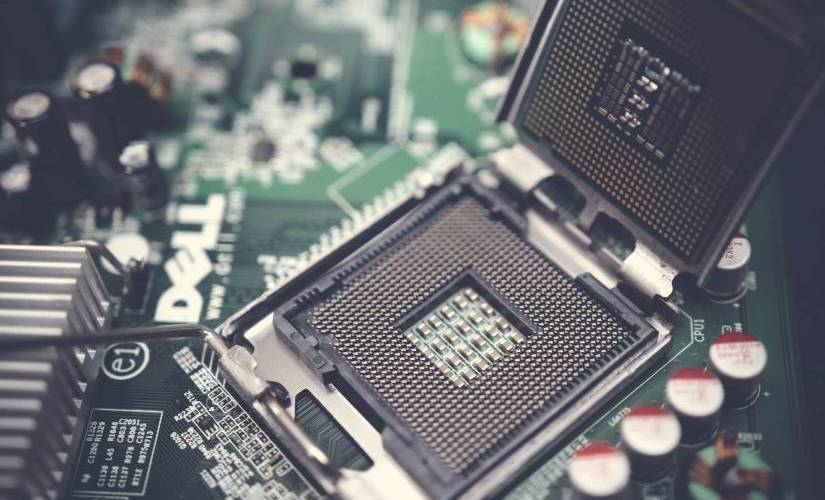Don’t Forget Hardware in IoT Security
Don’t Forget Hardware in IoT Security

It’s easy to find cybersecurity software solutions for Internet of Things (IoT) devices to make your life effortless. However, many people forget about the hardware.
Software solutions can monitor and manage your IoT devices but don’t necessarily address the underlying problem — these items aren’t secure in their own right. That’s why you should look at ways to protect your technology from hardware attacks.
The Importance of Hardware Security for IoT
Hardware security in IoT devices is necessary to protect users’ collected data. IoT gadgets have become increasingly common, and it’s expected there will be 75 billion connected devices in 2025. This introduces a new set of security challenges.
These devices are often inexpensive, and their manufacturers do not always have the expertise to ensure they are secure. Therefore, they are increasingly vulnerable to attacks. The fact that these devices are connected to the internet makes them ideal targets for hackers. Attackers that access one can infiltrate all other gadgets on the network.
The consequences can devastate end users and businesses using these devices for critical functions such as manufacturing or health care. A hacker could steal sensitive information or tamper with data without detection by anyone else who uses the system, making it impossible for them to detect any problems until it’s too late.
Why Do You Need Hardware Alongside Software Security?
Hardware is necessary alongside software security because it provides a layer of protection that software alone cannot.
For starters, some software applications use standard systems and services that come with a device’s operating system — alongside other apps installed on top of the base OS. These can be vulnerable to attack. Problems often arise from how these programs interact with hardware components controlling access to data or other sensitive information.
Another reason why hardware in IoT security is important is because of how easy it is to compromise devices. In fact, the number of gadgets at risk is so great that organizations can no longer rely on traditional software security solutions alone.
One instance of a security breach in 2019 proves this. Hackers were able to install software on 1.5 billion WhatsApp users’ devices, compromising their personal information.
Security breaches occur because many companies use off-the-shelf components for their products, meaning they need more expertise in-house to design secure software for those parts. They might not see the need because they overlook how much damage just one compromised piece of hardware can do.
Types of Hardware Attacks on IoT
There are various attacks hackers use to compromise IoT devices. The most common ones are:
- Side-channel attacks: This type of cyberattack uses information that is observable to attackers, not end users. For example, they may use the electromagnetic radiation given off by devices or time information to gain access to your device.
- Brute-force attacks: This trial-and-error method is used to access data by trying many passwords or PINs until the automated software guesses the right one.
- Rowhammer attacks: This is a form of denial-of-service attack on a device that uses flash memory. The name comes from how the attacker floods the memory with repeated read commands, causing it to write over itself and potentially corrupt or destroy data.
- Fuzzing attacks: This involves sending random data to an IoT device until it crashes or fails to function properly.
How to Improve Hardware Security in IoT Devices
Organizations should take the following hardware security measures to protect endpoint devices.
1. Remotely Update the Firmware
IoT devices are increasingly used in critical systems, from smart cars to medical equipment. These systems are becoming significantly more complex and often include hundreds of different components that must communicate with each other. As these systems become more intricate, it becomes harder for manufacturers to ensure all pieces are working correctly and that there are no security vulnerabilities.
Updating the firmware in these devices can enhance hardware security. However, this is usually done by sending new code over a network connection. If someone else can access that connection, they can send malicious code.
On the other hand, remotely updating firmware can protect against attacks because it ensures that only authorized users can access your system. This makes it much more challenging for hackers or unauthorized users to get into your network and use it maliciously.
2. Lock All Devices After Deployed Into Production
Locking IoT devices is a crucial step in improving hardware security. It’s a simple concept that many companies should pay more attention to when maintaining an item’s protection.
IoT devices are vulnerable to attack once they’re deployed into production. The longer it stays connected, the more exposed it becomes to malicious activity. The only way to protect the gadget is by implementing strict security measures, which should be in place before using it.
Locking down an IoT device involves restricting access by requiring users to enter an authentication code or password every time they want to log in. This eliminates any unwanted access attempts and keeps hackers at bay.
3. Use Tamper Pins to Implement Hardware-Based Authentication
Tamper pins are a simple but effective way to improve the security of IoT devices.
The IoT is the fastest-growing global market today, and the demand for IoT hardware is skyrocketing. However, as with other technologies, this growth can lead to serious security breaches if you don’t take proper precautions. To stay safe in such an environment, you must install tamper pins on your devices.
Certain hardware attacks may require the attacker to manually remove parts of the device to access debug ports or memory channels. However, tamper pins can enhance hardware security and detect when someone attempts to break into it.
Once detected, the tamper pin will instruct the processor to perform a routine that involves a reboot to protect sensitive data, such as deploying a complete memory wipe.
4. Use a Trusted Platform Module (TPM) Chip to Store Cryptographic Keys
A trusted platform module (TPM) chip in your IoT device can secure your data and keep it safe from hackers.
A TPM is a secure cryptoprocessor that runs independently of your computer’s or other devices’ main processor. It stores sensitive information, such as encryption keys, passwords, and digital certificates.
You can use TPMs in IoT devices to ensure they are always running in a trusted state and remain secure even if they’re compromised by malware. This prevents attackers from accessing sensitive data on your system without your knowledge.
The TPM chip is also used to protect cryptographic keys and passwords so unauthorized users cannot steal them.
5. Leverage a Secure Boot Process
Another way to improve IoT security is by leveraging a secure boot process. This ensures your device is running the correct operating system and that nothing has been tampered with or compromised it. This process also guarantees the hardware is secure against any malicious modifications or attacks during its life cycle.
The secure boot process starts when you first turn on your device. At this point, the hardware checks itself for any signs of tampering. Then, it verifies the integrity of all software components within it. It also ensures firmware components are up-to-date and authentic.
You can implement a secure boot process in several ways. One method involves storing a master key within the device before shipping it out to customers. The device will use this key to verify that any updates are legitimate before applying them to your device.
Protect Your Endpoint Devices With Hardware Security
It is important to remember that hardware plays an important role in IoT security. Failing to consider the potential risks of your device may put your customers at risk, and the legal implications can be serious. The last thing you want to happen is to suffer an attack that you could have prevented.
However, if you keep these tips in mind and implement them properly, you will be able to ensure the safety of all users.
Featured Image Credit: Provided by the Author; Pexels; Thank you!
The post Don’t Forget Hardware in IoT Security appeared first on ReadWrite.
(32)


